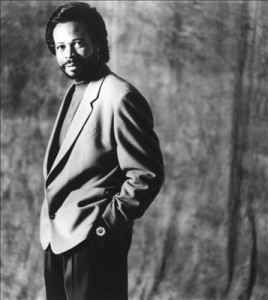It occurs to me that perhaps I spend too much time bemoaning the state of the world in this column which is, after all, supposed to be a joyous celebration of classic soul music. Frankly, I’m not sure how people manage to keep a sunny disposition given the news that comes to us from around the country and the world these days. How could you possibly watch the events from Paris last week (Je Suis Charlie!), and be anything but pessimistic about the future?
Some people manage to stay upbeat though, and lately I’ve started to figure out how they do it from talking to them about it. The trick is apparently to be in this world, but not of it. By that I mean you live in the world, but you don’t let world events get to you. I’m not sure I could do it, or even if I want to, but it is a valid way of life.
The New England winter is tough even if you are optimistic by nature. It’s grey, it’s cold, and it gets dark early and stays that way for a long time. This is especially true of the months that follow the holiday celebrations, and precede the coming of spring. The positive side is that when the spring comes, it is brighter here, and more appreciated by those who have survived the grim months that came before. There’s a trade-off for everything I suppose. Yin and yang. Mutual arising. Today is a typical winter day here in Rhode Island. Cold and grey. But I am determined to bring a ray of light to this day in the form of one of the most hopeful songs to ever grace the radio airwaves and the music charts in this country.
Edwin Hawkins was born in Oakland in 1943. He was just a toddler when he began to sing in church, and by the time he was five he was playing the piano. When his family gospel group began recording two years later, Hawkins was already their piano accompanist. Ten years later, Hawkins, along with Betty Watson, were co-founders of the Northern California State Youth Choir, which attracted 50 of the finest soloists in the Bay Area. In 1968, the choir recorded an album called Let Us Go Into the House of the Lord. One of the album’s tracks was “Oh Happy Day,” and it was a surprise when it began showing up on FM play lists in the area. Before long, it was on R&B and pop radio around the country, eventually hitting the Top Five on the pop chart in 1969, selling an astonishing seven million copies, and winning a Grammy.
“Oh Happy Day” began life as an 18th-century hymn written by English clergyman Philip Doddridge, who based his lyrics on the Biblical book of Acts (8:35). Doddridge set his lyrics to a melody that had been written in 1704 by J. A. Freylinghausen. By the mid-19th century, Edward F. Rimbault had added a chorus to the hymn, and given it a new melody. The song was often heard in the United States and the United Kingdom at baptismal and confirmation ceremonies. This is the history on which Hawkins based his gospel arrangement.
When “Oh Happy Day” became a hit, the choir changed their name to the Edwin Hawkins Singers. The soloist on the smash hit was Dorothy Combs Morrison, and the success of the record convinced her to leave the group in favor of a solo career. It was a tough blow for Hawkins to absorb, in terms of the group’s commercial prospects. The Hawkins Singers did manage to return to the charts the following year when they backed Melanie on her hit “Lay Down (Candle in the Wind).”
The Edwin Hawkins Singers weren’t done yet, and won another Grammy in 1972 for “Every Man Wants to be Free.” The third Grammy came in 1980 for Wonderful, and the fourth in 1983 for If You Love Me. In the early ’80s Hawkins founded the Edwin Hawkins Music and Arts Seminar that still offers annual gospel music workshops that conclude with a performance by the mass choir that has assembled for the seminar. Hawkins has continued to record and tour sporadically over the years.
“Oh Happy Day” provided hope at a time when there was very little of it in this country. People are always looking for hope, and that’s why the record was such a success. We could use a song like that today.






Comments